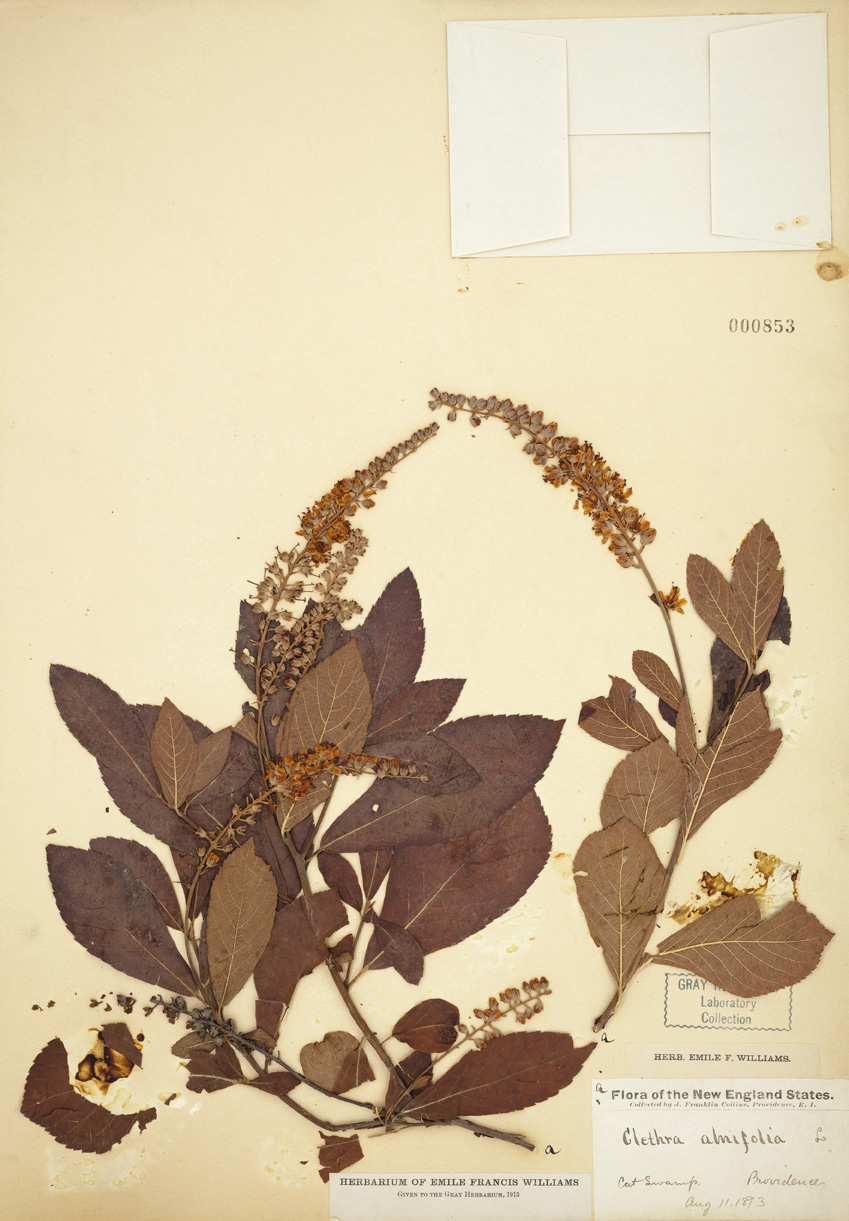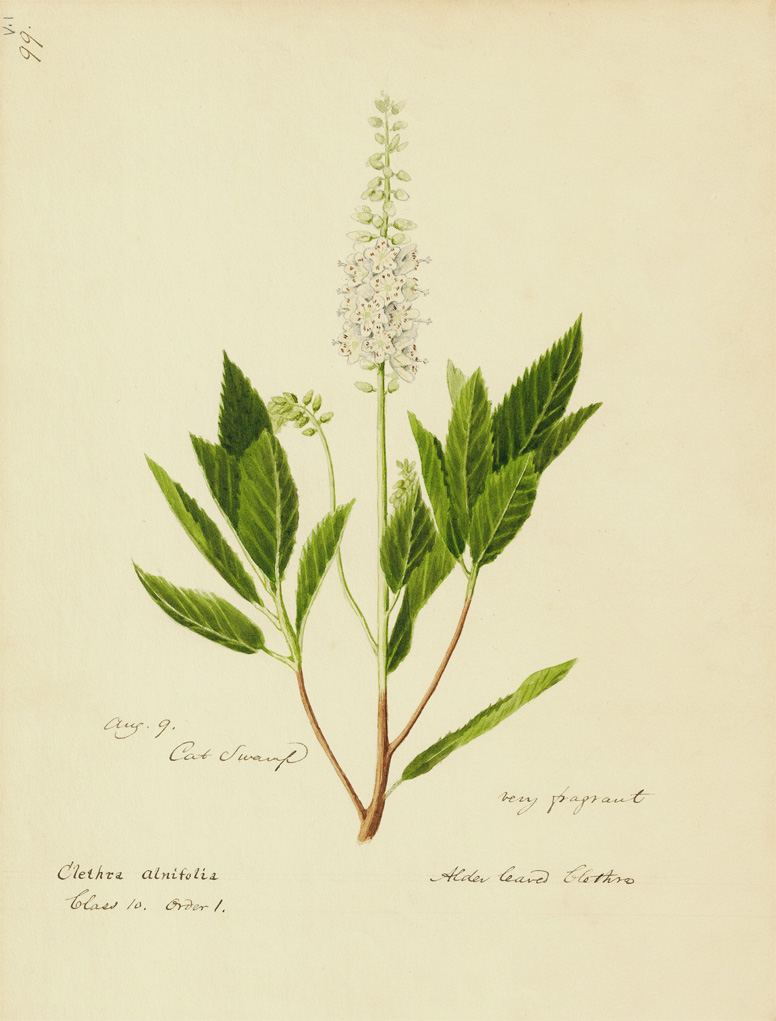Why should we turn to China, Japan, and the isles of the sea, when our own forests yield us such a shrub as this?
— William Whitman Bailey, New England Wildflowers and Their Seasons (1897)
The illustrations are amazing in their detail. His execution was very exact. Observing the delicate veining on the leaves, you want to reach out and touch the stems to feel the hairs growing along it. You notice the newly-formed buds and can count the number of stamens on each flower. The posture of each plant and leaf is so realistic it makes them immediately identifiable. The colors, which are incredibly accurate, catch your eye, making each drawing come to life.
Clethra alnifolia L.
coastal sweet pepperbush, Clethraceae (white alder family)
One of the most common understory shrub species in southern New England. Its range extends from eastern Texas, through coastal parts of the Southeast, into southern New England, southern New Hampshire and coastal Maine. Clethra alnifolia grows in moist woods, swamps and river and lake shores. The white flowers of this species appear in midsummer and are extremely fragrant, making this a good choice for moist gardens.
The genus name, Clethra, comes from the Greek klethra, for “alder.” The species name, alnifolia, refers to the similarity of the leaves to alders in the genus Alnus.
Below: Acrostic., September 7, 1856 | Edward Lewis Peckham (1812–1889) | Rhode Island Historical Society



